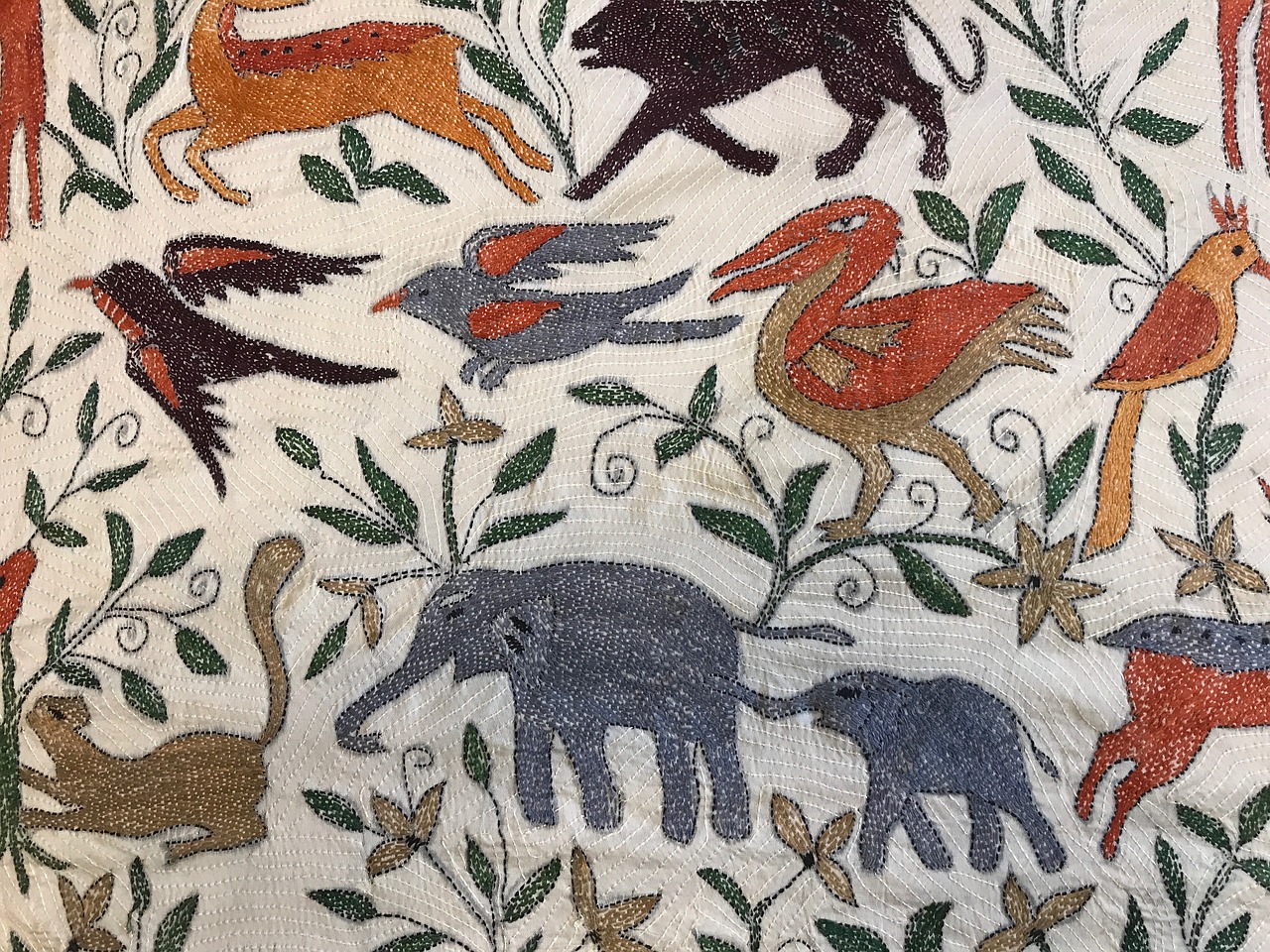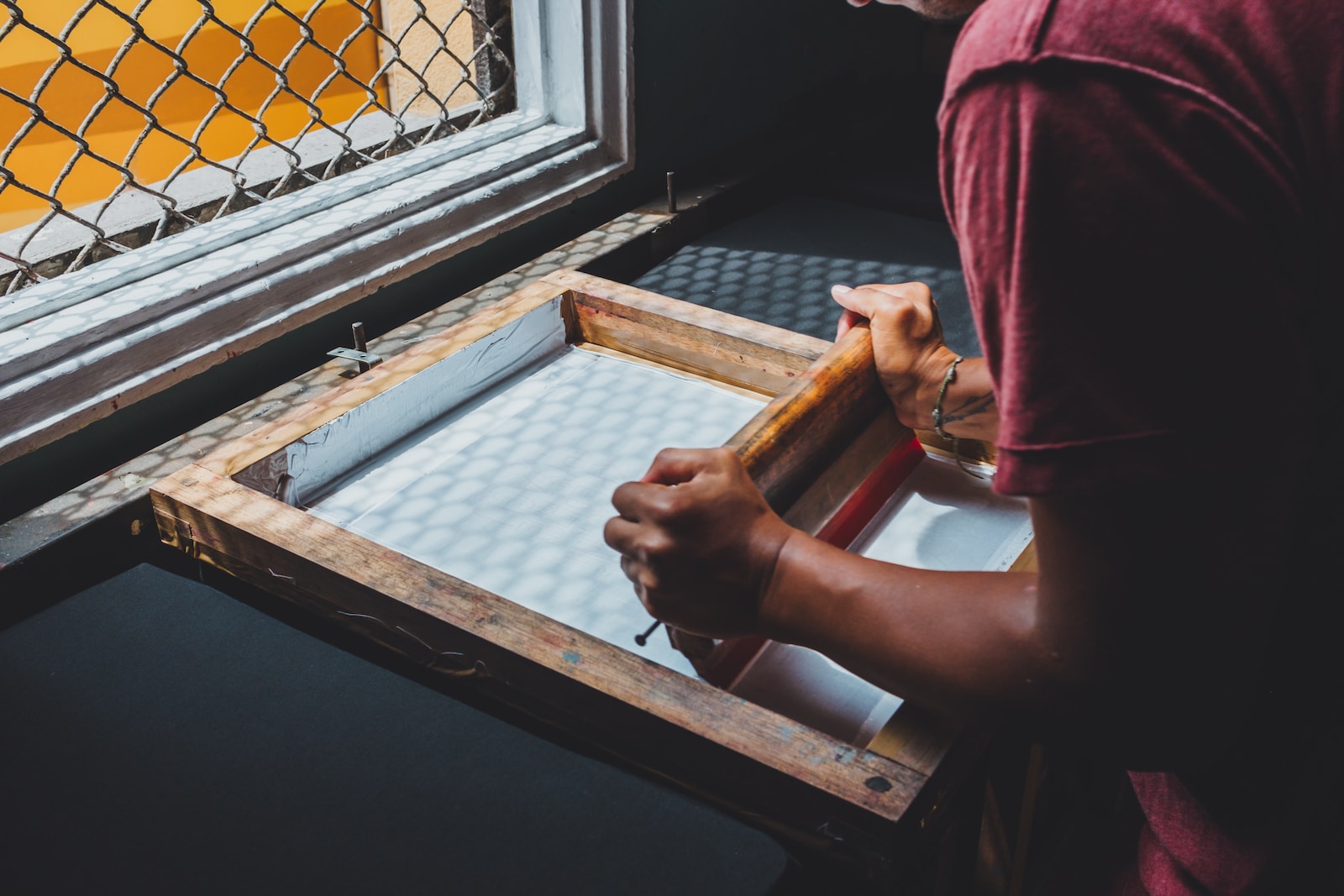Sashiko and Kantha are two traditional forms of embroidery that have gained popularity around the world. While they share some similarities, there are distinct differences between these two techniques. Sashiko is a Japanese style of embroidery that involves stitching geometric patterns with white thread on indigo-dyed fabric, creating a striking contrast. On the other hand, Kantha is an embroidery technique from India and Bangladesh, where colorful threads are used to create intricate designs on layers of recycled fabric.
The main difference between Sashiko and Kantha lies in their origins and cultural significance. Sashiko has deep roots in Japanese history and was originally used to reinforce textiles for warmth or repair worn-out garments. It evolved into an art form known for its precise stitches and minimalist aesthetic. In contrast, Kantha emerged as a way to repurpose old saris by layering them together with running stitches, resulting in beautiful quilts or blankets rich in symbolism.
Overall, while both Sashiko and Kantha involve decorative stitching on fabric, they differ in terms of origin, technique, and purpose. Whether you’re drawn to the refined simplicity of Sashiko or the vibrant storytelling of Kantha, exploring these unique embroidery styles can offer endless creative possibilities.
Sashiko: A Traditional Japanese Embroidery Technique
Sashiko is a traditional form of Japanese embroidery that has been practiced for centuries. It originated as a way to reinforce and mend clothing, but over time it evolved into a beautiful decorative technique. Here are some key points about Sashiko:
-
Meaning: The word “Sashiko” translates to “little stabs” or “little pierce.” This refers to the small running stitches that create intricate patterns on fabric.
-
Materials: Sashiko is typically done using indigo-dyed cotton fabric called “asa-no-ha,” which has a distinctive blue color. White thread is used to contrast against the dark fabric, creating visually striking designs.
-
Stitching Technique: Unlike other embroidery techniques where the needle goes through both layers of fabric, in Sashiko, only one layer is stitched at a time. The stitching follows straight lines or geometric patterns, resulting in evenly spaced rows of stitches.
-
Designs: Traditionally, Sashiko designs were inspired by nature and everyday life in rural Japan – motifs such as waves, mountains, plants, animals, and geometric shapes were commonly used. These designs not only added beauty but also had symbolic meanings associated with them.
-
Functionality: In addition to its aesthetic appeal, Sashiko was employed for its practicality too; the densely stitched patterns created an extra layer of warmth and durability when applied to garments like jackets or kimono.
-
Modern Applications: While still rooted in tradition, Sashiko has gained popularity beyond mending clothes and can now be seen on various items like bags, cushions, table runners and more! Its unique style continues to inspire contemporary artists around the world.
Kantha: A Decorative Stitching Tradition from India
Kantha is a traditional form of decorative stitching that originated in the Indian subcontinent. It is known for its intricate designs and beautiful craftsmanship. Here are some key points about Kantha:
-
Origins: Kantha has its roots in rural Bengal, where it developed as a way for women to repurpose old garments and create something new and beautiful out of them.
-
Materials: Traditionally, Kantha was created using discarded cotton saris or dhotis layered together with running stitches. However, today it can be found on various fabrics such as silk, muslin, and even synthetic materials.
-
Stitching Technique: The main characteristic of Kantha embroidery is the use of simple running stitches that create unique patterns and motifs. These stitches are usually done by hand using a needle and thread.
-
Designs: Kantha designs often feature nature-inspired motifs like flowers, birds, animals, and geometric shapes. They also frequently include scenes from everyday life or religious symbols.
-
Variations: There are different types of Kantha embroidery based on their purpose and usage:
- Lepkanthas: These are quilts made by layering several pieces of fabric together with elaborate stitchwork.
- Sujnis: Sujni refers to smaller embroidered pieces used as covers for pillows or mats.
- Oaar or “running” kanthas: These refer to long strips of cloth stitched together to make wraps or shawls.
-
Symbolism: In addition to being aesthetically pleasing, Kantha embroidery often carries symbolic meanings within the community where it is produced—for example fertility blessings for newlyweds or protection against evil spirits.
-
Contemporary Usage: While originally intended for practical purposes like warmth and comfort, today’s Kantha creations are also highly sought after as decorative pieces, fashion accessories, and even wall hangings.
Kantha embroidery is a testament to the rich cultural heritage of India. Its beautiful craftsmanship and intricate designs continue to captivate people around the world.
Comparing Sashiko and Kantha: Similarities and Differences
When it comes to textile traditions, Sashiko and Kantha are two prominent techniques that have their roots in Japanese and Indian cultures respectively. While both of these methods involve stitching, there are some key similarities and differences between them.
Similarities:
- Both Sashiko and Kantha originated as ways to mend or repurpose worn-out fabrics.
- They incorporate decorative stitching patterns that enhance the overall visual appeal of the fabric.
- Traditional designs for both techniques often feature geometric shapes, floral motifs, or repetitive patterns.
- Both techniques require manual hand stitching without the use of a sewing machine.
- The stitches used in Sashiko (running stitch) and Kantha (straight or running stitch) are simple yet effective.
Differences:
- Origin: Sashiko originated in Japan during the Edo period (1603–1868), while Kantha has its origins in ancient rural Bengal region spanning across present-day Bangladesh and West Bengal, India.
- Purpose: While Sashiko was primarily used for mending garments or reinforcing fabric durability, Kantha began as a way to recycle old saris into blankets or quilts with added warmth.
- Stitching Technique: In Sashiko, evenly spaced parallel rows of running stitches are made on indigo-dyed cotton fabric to create distinct geometric patterns. On the other hand, Kantha employs long straight stitches along with artistic embroidery to cover larger areas with intricate motifs.
- Designs: Traditional sashiko designs tend to be more structured with precise geometrical arrangements such as interlocking circles (kagome) or overlapping diamonds (asanoha). Conversely, kantha allows greater freedom for improvisation through storytelling elements like portraying village scenes or depicting nature-inspired imagery using vibrant colored threads.
In conclusion, while both sashiko and kantha share a common thread of hand stitching and decorative techniques, their origins, purposes, stitching styles, and designs set them apart. Whether you appreciate the refined elegance of Sashiko or the expressive narrative of Kantha, both these textile traditions showcase the rich cultural heritage behind their artistry.
Conclusion
In conclusion, while both Sashiko and Kantha are traditional embroidery techniques with rich cultural histories, they differ in various aspects.
Sashiko, originating from Japan, is characterized by its geometric patterns and precise stitching. It is primarily used for mending and reinforcing fabric, creating a beautiful combination of functionality and aesthetics. On the other hand, Kantha hails from India and Bangladesh, known for its intricate running stitches that form elaborate motifs. Kantha embroidery is commonly used to create decorative blankets or garments.
Despite their differences, both Sashiko and Kantha showcase the artistry and skill of their respective cultures. Whether you prefer the clean lines of Sashiko or the detailed motifs of Kantha, these two embroidery styles offer unique ways to add beauty to textiles while honoring tradition.



